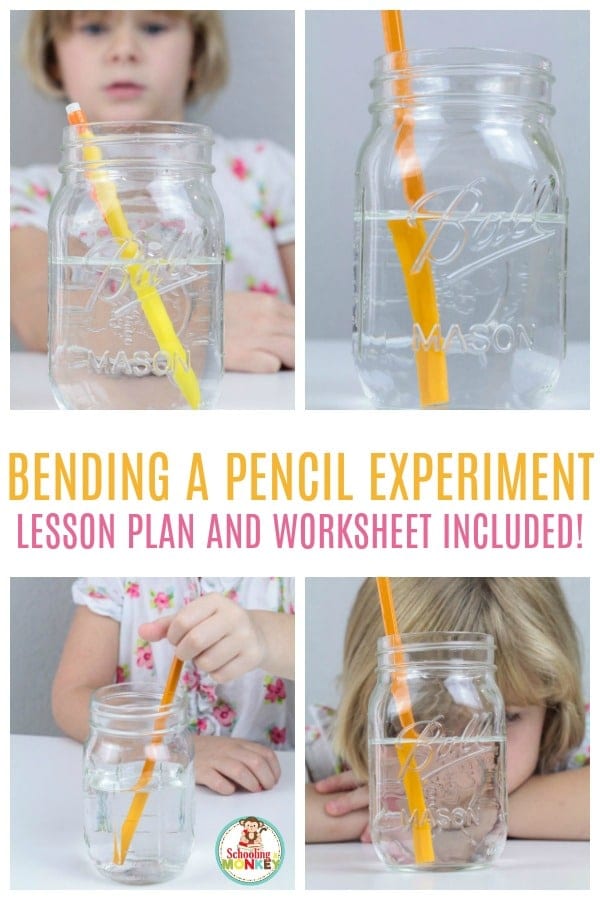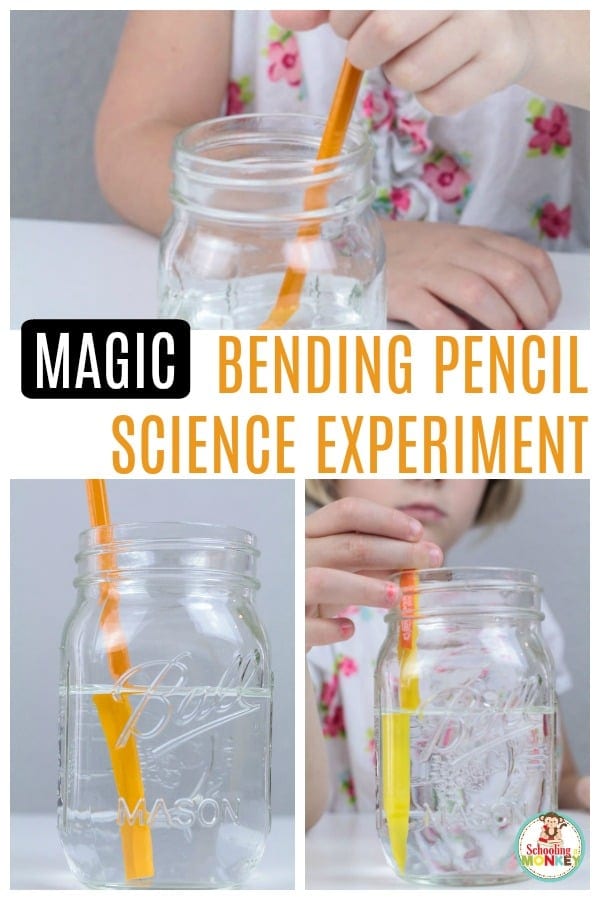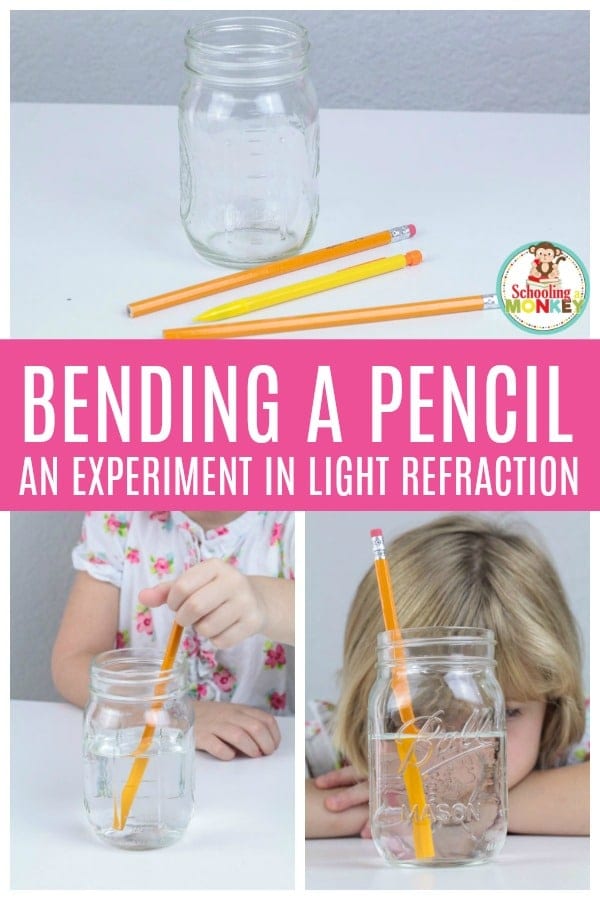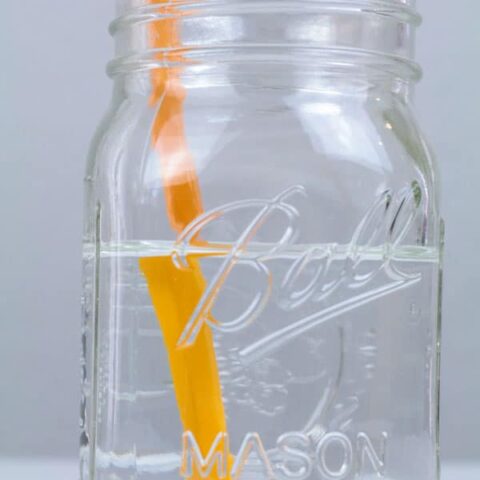We’ve done a lot of classic science fair projects and a lot of quick STEM activities. This time, we thought we would combine the back to school season with the science of light refraction and complete our own bending pencil experiment.
When you do this experiment, at first, young kids might think it’s a trick, but it really is all just a trick of the light and a fun way to study light refraction in a hands on way. Kids will be able to understand the concept of light waves a lot clearer after doing this activity!

The pencil in water experiment is a lesson in light refraction. It’s a fun experiment to teach kids how light moves in waves just like sound.
You can’t see light move in waves until something blocks the light (the water) and bends the light.
This simple refraction science experiment is super simple, but there is a lot of science behind the magic.
Keep reading to learn how to put together your own bending pencil experiment.
Bending a Pencil Lesson Plan
Want to turn the bending pencil experiment into a complete lesson? Just add these elements to your science time and add it into your list of super easy no-prep STEM challenges!

Experiment Variations
Any science experiment should include variations on the “right” answer.
For the refraction science experiment, you might try sticking the pencil in other types of liquids to see if they also bend the light.
Try using syrup, oil, or milk for the experiment.
You can also test the activity with other types of materials. Can you get a pen to bend? What about something that is already bent? Can you make it appear straight?
Result Discussion
Before or after doing the experiment with the kids, have a period where you discuss the science behind the lesson.
This is a good resource for learning about the science of light refraction.
Depending on the age of the children doing the experiment, you can dive deep into the science or just skim the basic principles.
Data Recording and Analysis
All good scientists know that data recording and analysis is crucial to any scientific discovery.
What this looks like will depend on the grade level of the child.
A young child might draw a picture of the results and write a word or two.
Older kids can dive into the math behind light refraction and can discuss the formula for the speed of light.
You may also want to check out our extensive lists of other STEM activities for kids and science experiments for kids!
Broken Pencil in Water Science Explanation
Light travels slower through water than air. When light enters the water, it slows down and changes direction.
Then, as soon as the light waves reach the end of the water, they speed up again.
This makes the image of the pencil appear broken because you’re viewing the pencil through the slower light waves in the water, and the faster light waves through the air on the part of the pencil outside the water.
When you look at the pencil from the side, the part above the water you can view light as it travels directly from your eye to the pencil.

But the part of the pencil in the water light travels from your eye, through the jar, through the water, and then out of the air.
This causes the light to refract because it is hitting different densities of materials.
Because of this, the image gets distorted and the pencil looks broken.
What You Need for the Light Refraction Experiment
You need just a few supplies for the refraction science experiment, which makes it even easier to do!
Each student will need one pencil and a jar half full of water for this experiment.
You can also have your students do the activity in groups of 3-4.
You will need:
More Quick STEM Activities
- Amazing Hot and Cold Water Density Experiment
- Leak Proof Bag Science Experiment
- How to Make an Instant Ice Tower
- Soda and Mentos Experiment
How Light Refraction Works
Watch the video below to learn how light refraction works and why it can “break” a pencil as well as flip an arrow!

Bending Pencil Science Experiment
Watch in awe as the pencil placed in the water breaks! It's not magic, it's light refraction! The bending pencil experiment is a favorite among kids of all ages.
Materials
- Plastic jars
- Pencils
- Syrup
- Oil
Instructions
- Fill the jars halfway with water.
- Place a pencil inside the jar.
- Rotate the jar until the pencil appears broken.
- Discuss the concept of light refraction with the kids. Why does the pencil look broken?
- Test out light refraction with other mediums, such as oil or syrup. Do the results stay the same? Are they more dramatic?
- Have the kids record the results of each experiment they do.
This experiment is so easy to do!
Recommended Products
As an Amazon Associate and member of other affiliate programs, I earn from qualifying purchases.





